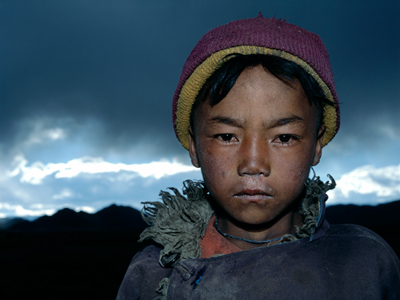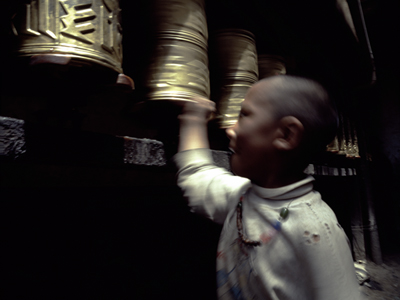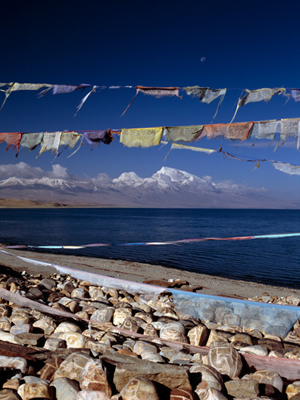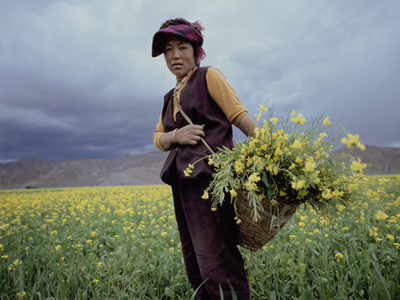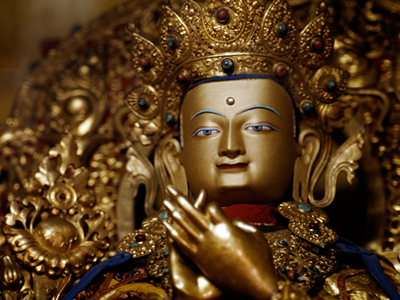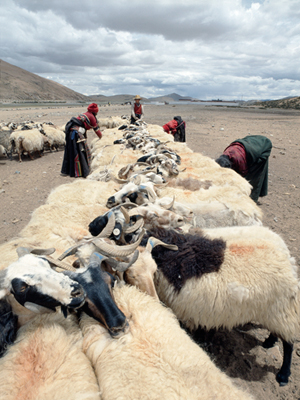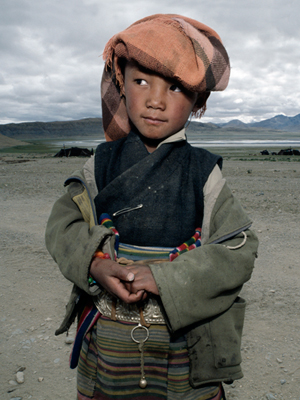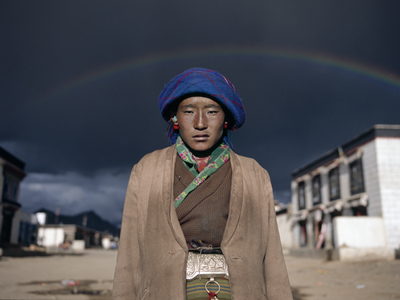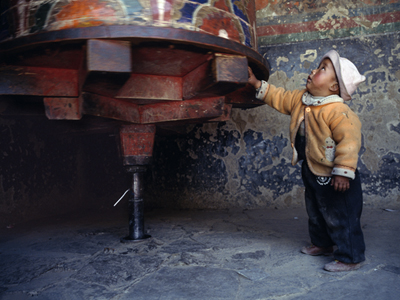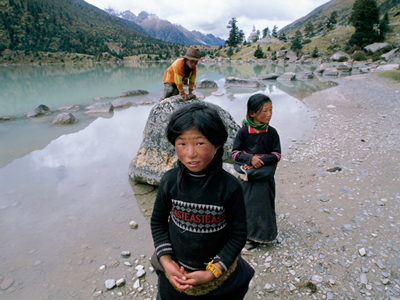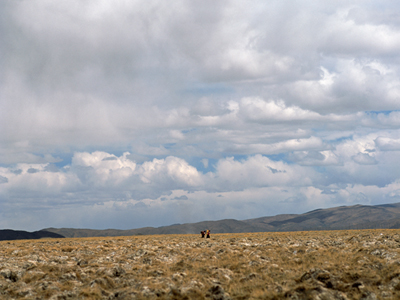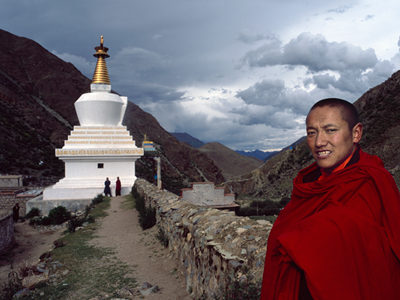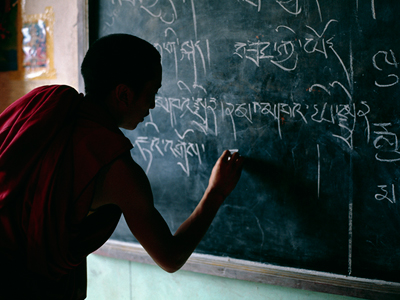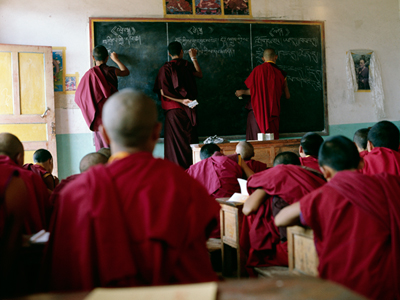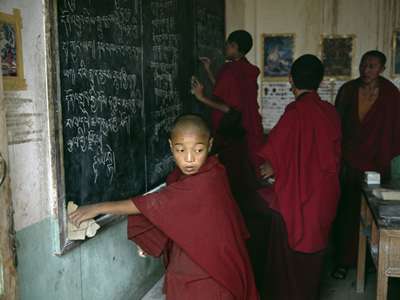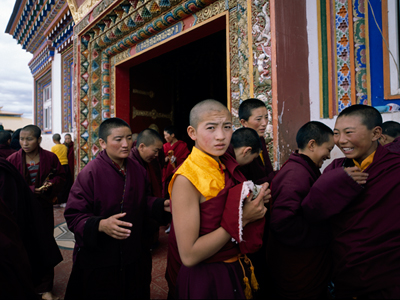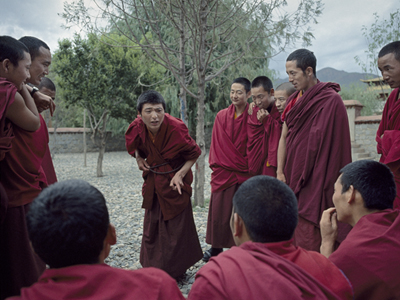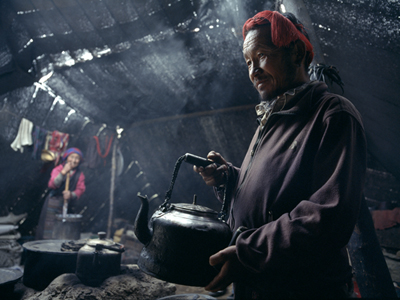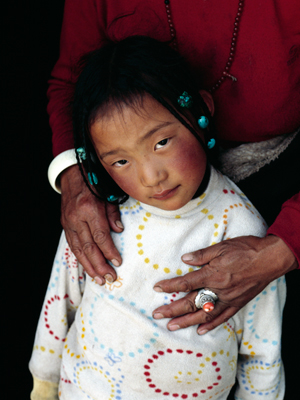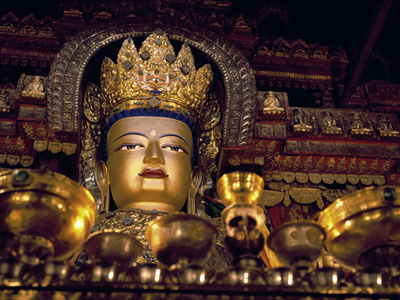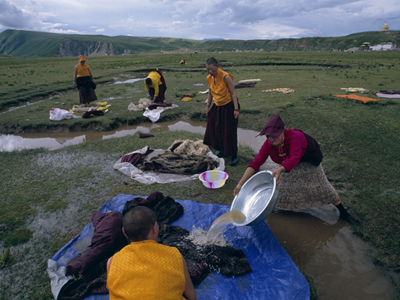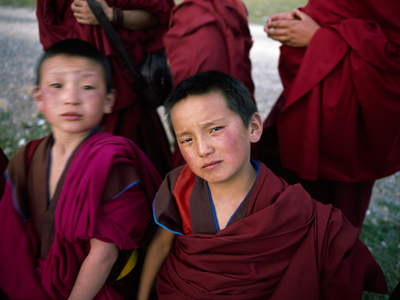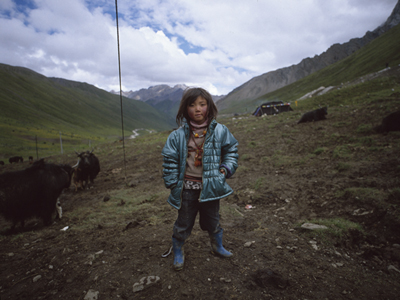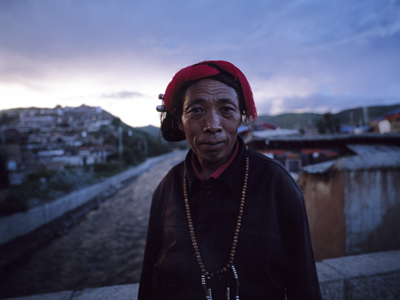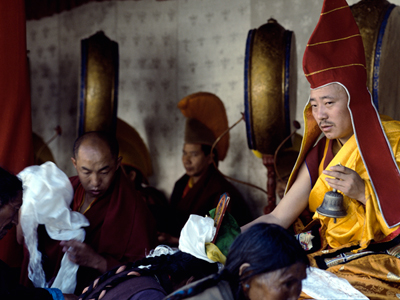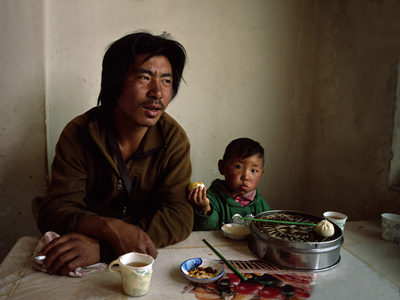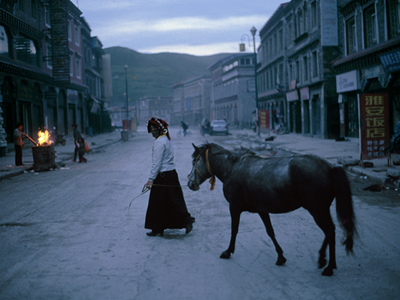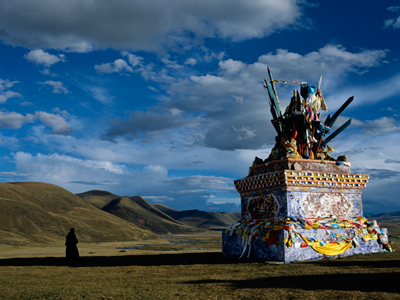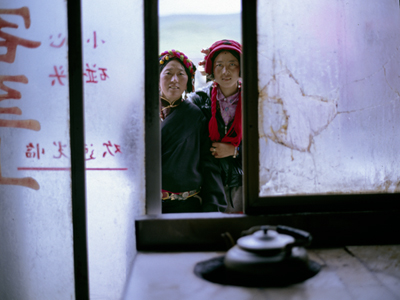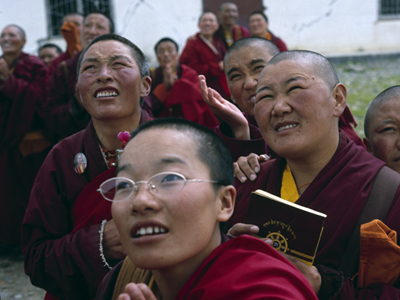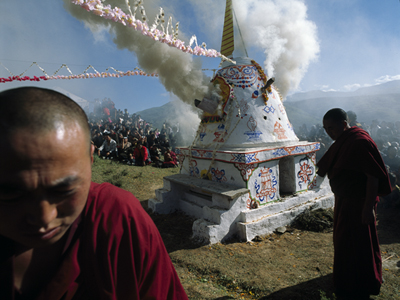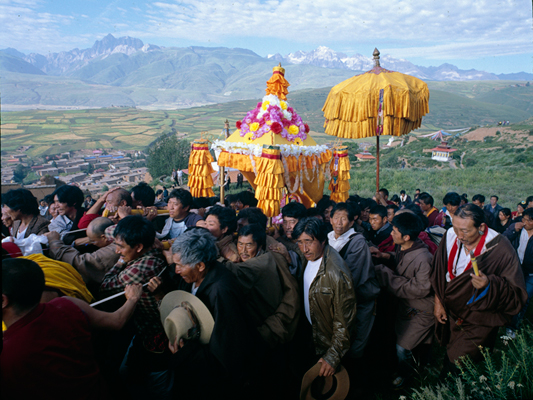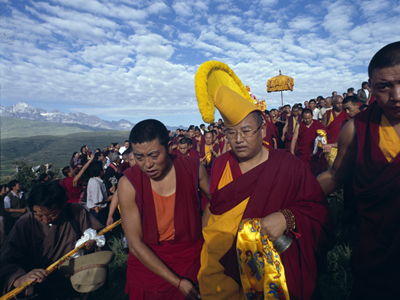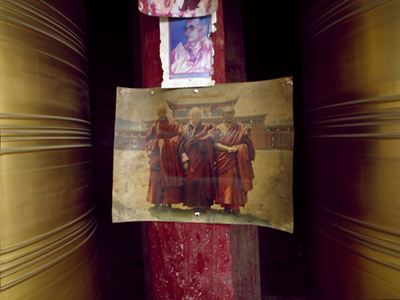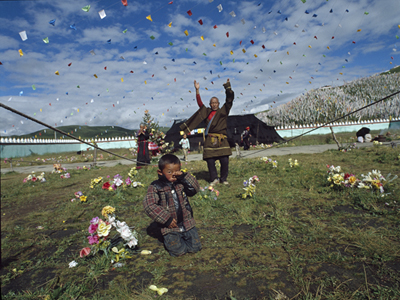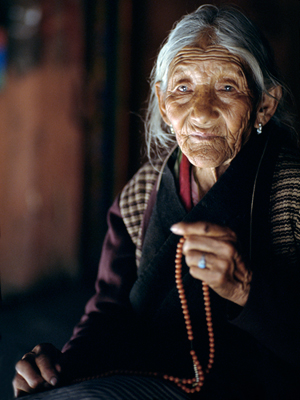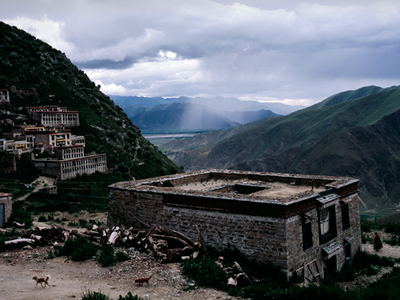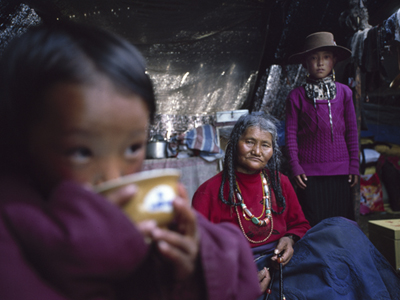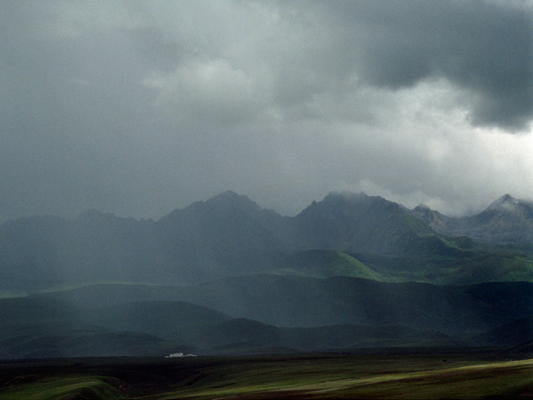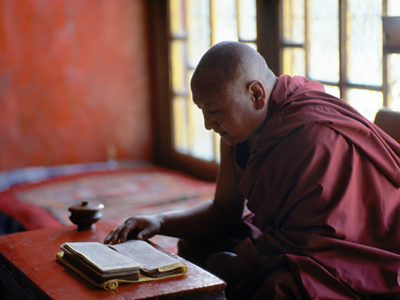For countless generations Tibet was an independent nation with it's own language, cultural identity, and unique tradition of Buddhism. Since 1959, despite the will of the native people, Tibet has been annexed and occupied by the communist government of China.
While the communist government in China has claimed overwhelming support for its policies in Tibet, it has imposed repeated ideological campaigns and heighten restrictions over religious observance and monastic life. Prior to the communists invasion of Tibet, there were over 6000 monastic institutions. Today only a fraction still exist, shadows of their former selves. Chinese authorities have increased patriotic education classes that require monks to make ritual denunciations of the exiled Dalai Lama, and pledge allegiance to the government. Subjected to raids, crackdowns, and reeducation sessions by the communist authorities, the future survival of these institutions and the integrity of their sacred teachings are now in question.
The Buddhist teachings of compassion are central to the Tibetan psyche. Yet the subsequent erosion of their culture by the communist government brings the people into conflict with the same pacifist concepts that have defined their identity and motivated their thoughts and actions for over a thousand years. Aside from occasional uprisings, the Tibetans largely continue to be resilient to their situation and prefer to adhere to their Buddhist teachings which stress a nonviolent resolution to problems. Still under the influence of their exiled spiritual leader the Dalai Lama, who teaches unconditional compassion and forgiveness towards enemies, many Tibetans view the current occupation as an opportunity to practice their compassion and to enrich their spiritual condition.
In keeping with this philosophy, I decided to focus my project not on the animosity and segregation that continue to dominate the Tibetan landscape, but instead on the people’s proud struggle to conserve their culture while maintaining compassion toward those who threaten them. I focused on the daily lives of people who refuse to let their political circumstance hinder their journey towards happiness and spiritual enlightenment. In Tibet I found a people whose spiritual disposition encourages them to smile and enjoy life, rather than to indulge negative emotions allowing them to dominate their thoughts and actions.
Clear parallels exist throughout history between the Tibetan’s enduring struggle to survive and the plight of other indigenous groups. Nations seeking to expand influence and control continue to subjugate indigenous people without respect, forcing them to integrate into a foreign system of governance wherein misguided control of resources repeatedly resulted in the deaths of millions of people and the loss of generations of knowledge of cultural information.
My hope is that this project will continue the ongoing dialogue, but also elevate the discourse to a higher level. I believe the resolution of the Tibet-China issue has greater ramifications for future generations. The Tibetan insistence on a peaceful nonviolent solution to their conflict should be used as a model of resolving conflicts rather then the exception. Communist China’s attempt to expand their control into Tibet has perpetuated cultural genocide into our collective conscience. Unless we learn from these ongoing tragedies, cultural genocide will occur again, and other cultures will face premature extinction through subjugation and forced integration.
By documenting a living culture surviving on the verge of extinction, I endeavor to cultivate the hope that its unique identity will persist. Tibet offers us much more than a glimpse of an endangered environment and a culture struggling to survive in the face of repression. A closer examination of the events unfolding there provides us with the opportunity to understand human nature, but more importantly, an opportunity to exercise our ability to overcome it.
